Why Was Grette The Strong, Icelandic Poet And Warrior Afraid Of Darkness?
A. Sutherland - AncientPages.com - Grettir's saga is considered one of the Sagas of Icelanders (Íslendingasögur) written down in the thirteenth and fourteenth centuries. This literary work of the unknown author is believed to include stories of events that supposedly took place between the ninth and the eleventh centuries in Iceland.
Monument of Grettir the strong in Bjarg, Miðfjörður. Image credit: Eysteinn Guðni Guðnason - CC BY-SA 2.5 DEED
Once, a long time ago, there was a poet and a warrior. His name was Grette the Strong (Grettir Ásmundarson, an Icelandic outlaw). His superpower was widely known even among the strongest berserkers.
These were times of change in Iceland. The Vikings and, among them also, Grette had begun to be Christianized and decided to build a church. Everybody in Iceland knew that one among them did not want to accept the Christian faith was the sheepherder, Glåm. He was a big-grown, sloppy male widely known as a wife oppressor and a troublemaker. The man was proud of his pagan faith and mocked his neighbors, who had gone over to the "white Christ."
Strange things happen all the time, so it's a life.
Then, one day, Glåm never came home from herding the sheep. His worried wife sent away some of the neighbors to search for him. They found Glåm dead on the side of a mountain, torn to pieces by some unnatural force. Their only explanation that such a thing could happen was punishment.
"Yes, yes," people said. "There, he paid the price for his pagan faith."
Moreover, they also noted that there was something strange about the body of Glåm. No matter how people tried to free the body, it didn't work. Finally, a monk arrived to pray for the deceased Glåm and two strong oxen to transport him to the resting place. Not even this was possible, and these powers did not help to move the body.
There was nothing else to do. Finally, a monk arrived to pray for the deceased Glåm and two strong oxen to transport him to the resting place. Not even this was possible, and these powers did not help to move the body. There was nothing else to do.
After Glåm died, he started going around at night and riding on people's rooftops until they collapsed. Now, everybody knew that he become a "draug", a living corpse possessed by some evil spirit, and no one could protect himself. But at the same time, the village residents didn't want to move either.
In a council, the village's peasants decided to summon the great Hero Grette. Naturally, the man was attracted by the idea of encountering such an opponent; he felt deeply honored.
He decided to spend the night in the only possible house with the rooftop still spared.
 From the 17th century - Icelandic manuscript AM 426 fol., now in the care of the Árni Magnússon Institute in Iceland. Unknown author - Public Domain
From the 17th century - Icelandic manuscript AM 426 fol., now in the care of the Árni Magnússon Institute in Iceland. Unknown author - Public Domain
It was also decided that if draugen came running at night, Grette would try to leave the place quickly. At first, the evening was peaceful; later, it darkened, the wind increased in strength, and a hollow terrifying howl was heard over the hills. Suddenly, the roof arched over Grette's head, but he remained in bed, waiting. The house began to sway from time to time as if a hurricane snatched it, and in the end, Glåm himself came crashing through the roof, and suddenly caught sight of Grette.
Grette - Glåm Wrestling Over The Hills
There was an extended tug-of-war between the two opponents until Glåm fell to the floor. Then Grette rushed at him, and they began a powerful wrestling. Glåm was undoubtedly no easy opponent, and soon, he had started to break Grette's embrace.
Then, the powerful Icelander threw the corpse behind him straight into the bearing of the house plank, and the whole building collapsed.
But the combatants did not seem to take any notice of what happened, and the fight continued over the hills and down to the cliffs of the sea. The wrestling appeared to be no end. Suddenly, the clouds drifted away, the full moon lit up with its pale glow, and at this moment, Grette looked in his opponents' eyes fixed on Glåm's face. For the first time, Grette saw Glåm's bizarre look.
"Night and day you will have my eyes before you," the draugen pronounced a death curse on Grette.
Suddenly, the paralysis of the hero Grette broke, and he drew his scissor sword and swept off Glåm's head. Then, he grabbed this and pushed it up so far in Glåm's ass that it could not be pulled out.
The incident was highly embarrassing to the terrible draugen Glåm that he never again appeared in the neighborhood. No one heard from him again.
What was Glåm's deadly curse about? Glåm hurled a deadly curse at Grette, who always saw the opponent's hideous eyes before him, and he remembered his words: "You will have my eyes in front of you night and day"?
Grette was afraid of the darkness from that day and "dared not be alone as soon as dusk fell." 1
The hero still had many adventures, but these made him an outlaw, constantly deeply troubled by the powers of witchcraft. Glåm's deadly curse always haunted the hero and never lost its power.
Written by – A. Sutherland - AncientPages.com Senior Staff Writer
Copyright © AncientPages.com All rights reserved. This material may not be published, broadcast, rewritten, or redistributed in whole or part without the written permission of AncientPages.com
Expand for referencesMore From Ancient Pages
-
 Dozens Of Giant ‘Lost’ Nazca Geoglyphs Unearthed By Drones In Peru
Archaeology | Apr 7, 2018
Dozens Of Giant ‘Lost’ Nazca Geoglyphs Unearthed By Drones In Peru
Archaeology | Apr 7, 2018 -
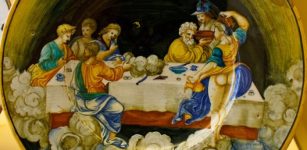 Amrita: Potion Of Immortality Consumed By Gods To Make Them Strong And Immortal
Featured Stories | Apr 5, 2019
Amrita: Potion Of Immortality Consumed By Gods To Make Them Strong And Immortal
Featured Stories | Apr 5, 2019 -
 Controversial Artifacts No One Wants To Examine Thoroughly: Is There Something We Are Afraid Of Discovering?
Ancient Technology | May 22, 2019
Controversial Artifacts No One Wants To Examine Thoroughly: Is There Something We Are Afraid Of Discovering?
Ancient Technology | May 22, 2019 -
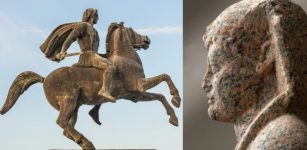 Alexander The Great Was Crowned Pharaoh And Declared Son Of God Amun
Ancient History Facts | Jan 4, 2019
Alexander The Great Was Crowned Pharaoh And Declared Son Of God Amun
Ancient History Facts | Jan 4, 2019 -
 4000-Year-Old Egyptian Leather Manuscript Forgotten For More Than 70 Years – Found
News | Sep 14, 2015
4000-Year-Old Egyptian Leather Manuscript Forgotten For More Than 70 Years – Found
News | Sep 14, 2015 -
 Yokai Hone-Onna (‘Skeleton Woman’): Deceptive Succubus That Feeds On Man’s Soul And Vitality In Japanese Folklore
Featured Stories | Jan 20, 2020
Yokai Hone-Onna (‘Skeleton Woman’): Deceptive Succubus That Feeds On Man’s Soul And Vitality In Japanese Folklore
Featured Stories | Jan 20, 2020 -
 Non-Tobacco Plant Identified In Ancient Pipe Using New Technology
Archaeology | Jun 30, 2020
Non-Tobacco Plant Identified In Ancient Pipe Using New Technology
Archaeology | Jun 30, 2020 -
 Secret Ancient World Buried Under The Vast Takla Makan Desert
Featured Stories | Jun 1, 2020
Secret Ancient World Buried Under The Vast Takla Makan Desert
Featured Stories | Jun 1, 2020 -
 Book Of Kells: Illuminated Medieval Manuscript From Monastery On Iona, Scotland
Artifacts | Feb 8, 2018
Book Of Kells: Illuminated Medieval Manuscript From Monastery On Iona, Scotland
Artifacts | Feb 8, 2018 -
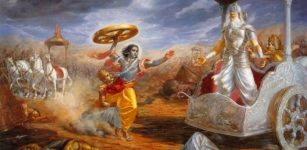 Mahabharata Is Much Older Than Previously Thought – Archaeological Discovery Reveals
Archaeology | Oct 22, 2019
Mahabharata Is Much Older Than Previously Thought – Archaeological Discovery Reveals
Archaeology | Oct 22, 2019 -
 12,000 Years Ago Siberian People Possessed Technique To Soften Ivory And Create Toys Or Art Items
Ancient Technology | Jan 6, 2021
12,000 Years Ago Siberian People Possessed Technique To Soften Ivory And Create Toys Or Art Items
Ancient Technology | Jan 6, 2021 -
 Remnants Of A Royal Rest House That Served As A Temporary Residence For Pharaoh Thutmose III
Archaeology | May 9, 2024
Remnants Of A Royal Rest House That Served As A Temporary Residence For Pharaoh Thutmose III
Archaeology | May 9, 2024 -
 Impressive Huge Ancient Lamassu Statue Unearthed In Nineveh, Iraq
Archaeology | Oct 28, 2023
Impressive Huge Ancient Lamassu Statue Unearthed In Nineveh, Iraq
Archaeology | Oct 28, 2023 -
 Thousand Unearted Artifacts Reveal ‘Major’ Ancient Migration To Timor Island
Archaeology | May 23, 2024
Thousand Unearted Artifacts Reveal ‘Major’ Ancient Migration To Timor Island
Archaeology | May 23, 2024 -
 Capoeira: Ancient Martial Art Disguised As A Dance Became A Symbol Of Resistance To Oppression
Ancient History Facts | Jun 8, 2018
Capoeira: Ancient Martial Art Disguised As A Dance Became A Symbol Of Resistance To Oppression
Ancient History Facts | Jun 8, 2018 -
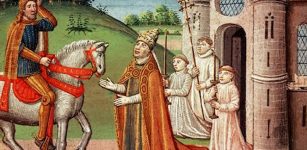 Medieval Warhorses Were Pony-Sized And Much Smaller Than Previously Thought
Archaeology | Jan 11, 2022
Medieval Warhorses Were Pony-Sized And Much Smaller Than Previously Thought
Archaeology | Jan 11, 2022 -
 First Genomic Evidence Of Early Migration From New Guinea Into The Wallacea Archipelago – New Study
Archaeology | Jan 14, 2025
First Genomic Evidence Of Early Migration From New Guinea Into The Wallacea Archipelago – New Study
Archaeology | Jan 14, 2025 -
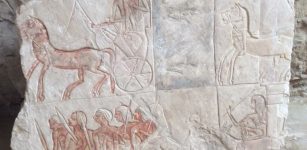 Unusual Scenes Painted On The Walls Inside Egyptian Tomb Of General Iwrkhy – Discovered
Archaeology | May 10, 2018
Unusual Scenes Painted On The Walls Inside Egyptian Tomb Of General Iwrkhy – Discovered
Archaeology | May 10, 2018 -
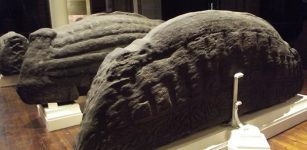 The Govan Stones – Treasures From The Viking Era In Britain
Featured Stories | Dec 27, 2015
The Govan Stones – Treasures From The Viking Era In Britain
Featured Stories | Dec 27, 2015 -
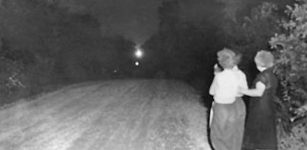 Mysterious Hornet Spook Light In Missouri
Featured Stories | Jun 26, 2024
Mysterious Hornet Spook Light In Missouri
Featured Stories | Jun 26, 2024

